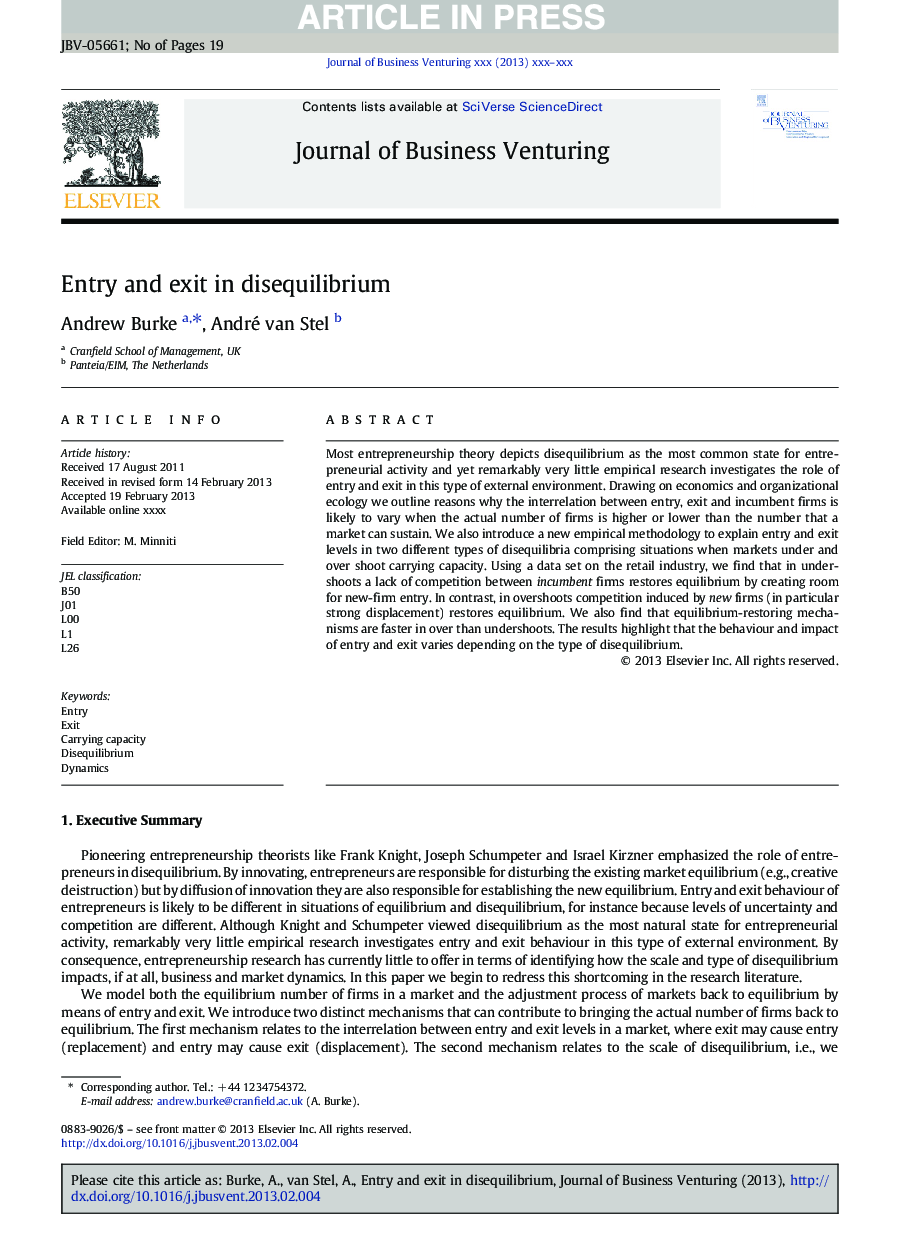| Article ID | Journal | Published Year | Pages | File Type |
|---|---|---|---|---|
| 10493915 | Journal of Business Venturing | 2014 | 19 Pages |
Abstract
Most entrepreneurship theory depicts disequilibrium as the most common state for entrepreneurial activity and yet remarkably very little empirical research investigates the role of entry and exit in this type of external environment. Drawing on economics and organizational ecology we outline reasons why the interrelation between entry, exit and incumbent firms is likely to vary when the actual number of firms is higher or lower than the number that a market can sustain. We also introduce a new empirical methodology to explain entry and exit levels in two different types of disequilibria comprising situations when markets under and over shoot carrying capacity. Using a data set on the retail industry, we find that in undershoots a lack of competition between incumbent firms restores equilibrium by creating room for new-firm entry. In contrast, in overshoots competition induced by new firms (in particular strong displacement) restores equilibrium. We also find that equilibrium-restoring mechanisms are faster in over than undershoots. The results highlight that the behaviour and impact of entry and exit varies depending on the type of disequilibrium.
Related Topics
Social Sciences and Humanities
Business, Management and Accounting
Business and International Management
Authors
Andrew Burke, André van Stel,
